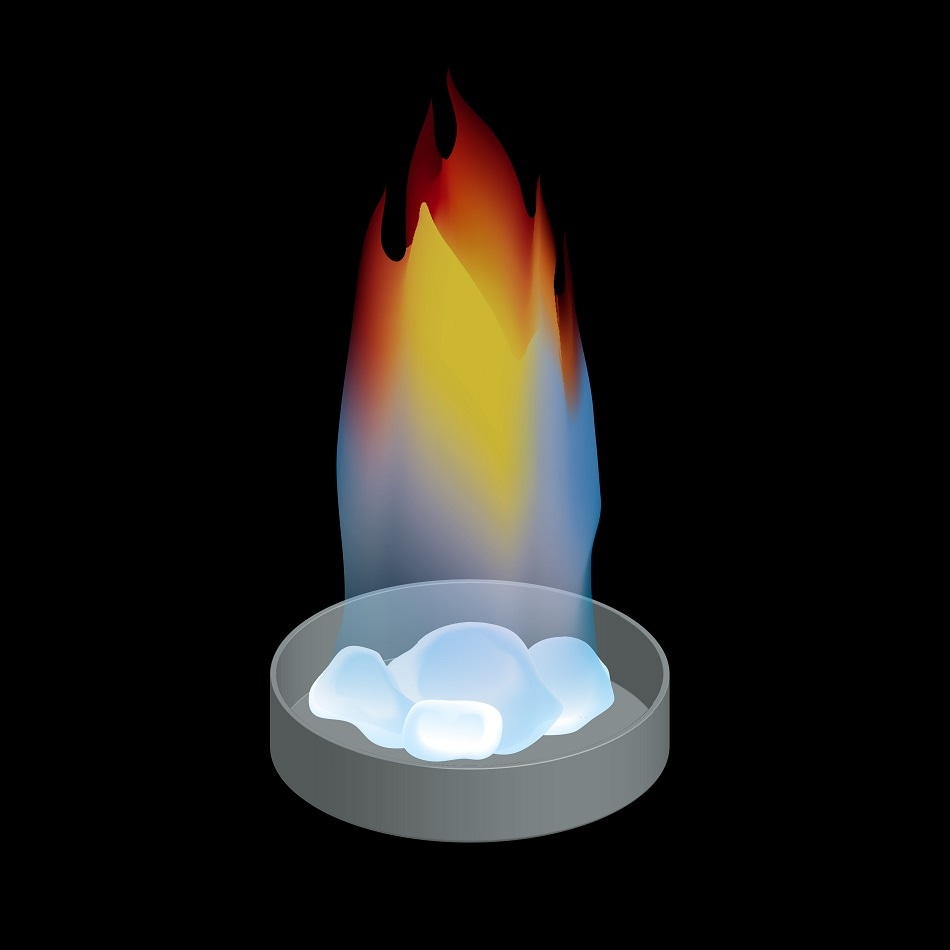Aug 23 2017
Scientists from the NYU Tandon School of Engineering have adopted an innovative technique for analyzing the formation of methane hydrate from water and methane. The technique has enabled the Scientists to rapidly and very efficiently investigate the individual steps in the formation process.
 chombosan/ Shutterstock.com
chombosan/ Shutterstock.com
Headed by Ryan Hartman, an Assistant Professor of Biomolecular and Chemical Engineering who is in charge of Tandon’s Flow Chemistry with Microsystems Laboratory, the NYU Tandon Scientists have adopted microfluidics along with small changes in temperature for analyzing the unpredictable process through which methane gas is transformed into a solid hydrate upon exposure to water. Microfluidics involves the accurate manipulation and control of fluids by restraining them to sub-millimeter geometries.
The study proves to be highly significant for the fields of engineering and climate science. Vast quantities of methane are trapped under the ocean’s arctic bed and in permafrost. A huge proportion of this methane is in an ice-locked methane hydrate state, where methane is encapsulated by water molecule cages.
Acquiring in-depth knowledge of the way in which methane, with the ability to absorb solar radiation 30 times when compared to carbon dioxide, reacts with water to form a crystalline gas hydrate and, by contrast, the way in which it is broken again into its gaseous state is crucial in having knowledge of how it will be able to catalyze, or maybe slow down, climate change.
It can also culminate in innovative techniques for gas separations, and also safe and efficient storage of natural gas because the amount of energy in the deposits of natural gas hydrate is nearly two times as that of all other fossil fuels taken together.
In a study investigating the manner in which transfer of mass and heat impacts the growth of hydrates, the Researchers have established an innovative technique for analyzing the formation of methane hydrate films, namely, a thermoelectrically cooled microchannel reactor developed by Hartman’s laboratory. The outcomes of the study have been reported in Lab on a Chip, a journal published by the Royal Society of Chemistry. Distinctively, the technique enables making “stepwise” changes in temperature, hugely minimizing experimental time and allowing an accurate investigation of the process by means of in situ spectroscopic methods.
The technique enabled Hartman and his colleagues to be the first to measure the extent to which mass transfer, including phenomena such as diffusion, has an impact on crystal propagation rates.
In general, Scientists are of the opinion that the growth of gas hydrate starts from nucleation, were water molecules start forming a latticework that encloses “guest” molecules in gases such as methane. The next step is crystallization, wherein the process quickly expands outward from the crystal formation seeds to larger structures, for example, sheets at the interface of gas and water.
There is a lack in the knowledge of kinetics of nucleation and other individual steps in the formation of hydrates. This is due to the drawbacks of conventional batch reactors—specifically high-pressure tanks including agitators and cooling/heating equipment—which involve “blanketing” of water using super-cooled methane gas. Systems such as these mandate the lowering of the phase boundary temperature for hydrate formation (the boundary being the interface between super-cooled water and methane gas) by nearly 10 °K. Yet, nucleation in such systems may need many hours or even days.
By adopting the new technique, Weiqi Chen, Hartman’s Doctoral Student and Bruno Pinho, Postdoctoral Associate, could incrementally sub-cool water molecules by an order of magnitude lesser than that mandated in larger-scale batch systems, thus accomplishing nucleation at just 1 °K increments at a considerably shorter time frame.
In the case of Hartman’s isothermal system, temperature cycling (i.e. alternation of experimental temperatures between two extremes) at cooling rates of the order of few seconds enabled the team to synthesize and use the nuclei rapid enough to carry out numerous investigations in a considerably shorter time period when compared to conventional techniques.
Nucleation is difficult to predict. It can take minutes or sometimes days in the formation of gas hydrates. But because we are able to cycle the temperature within seconds we can form seed crystals and use the nuclei we form to reproducibly form larger crystals.
Ryan Hartman, Assistant Professor of Biomolecular and Chemical Engineering, the NYU Tandon School of Engineering
Hartman’s technique allowed the Researchers to show that the rate of growth of crystals is contingent on the combination of heat transfer (e.g. by means of conduction), mass transfer and intrinsic crystallization (the rate of formation of hydrate crystals when unhindered by mass or heat transfer).
Imagine commuting from home to work using the same route every day. You cross three bridges, and depending on the day, one, two, or all three are congested. By how much each bridge slows you down, relatively speaking compared to the others, determines the overall time of your commute. In the context of hydrate crystallization, traffic congestion on the first bridge is heat transfer resistance, the second bridge is mass transfer resistance, and intrinsic crystallization the third. The rate at which hydrate crystals form can depend on all three. What we have done is to discover a way to measure it.
Ryan Hartman, Assistant Professor of Biomolecular and Chemical Engineering, the NYU Tandon School of Engineering
The Materials Research Science and Engineering Center (MRSER) program of the National Science Foundation principally supported the study.